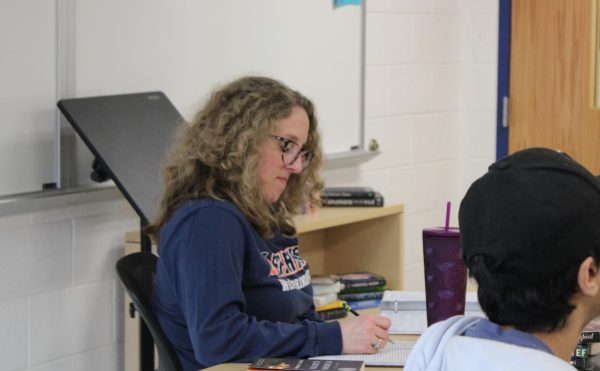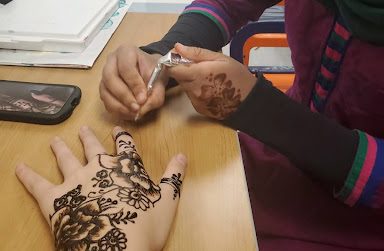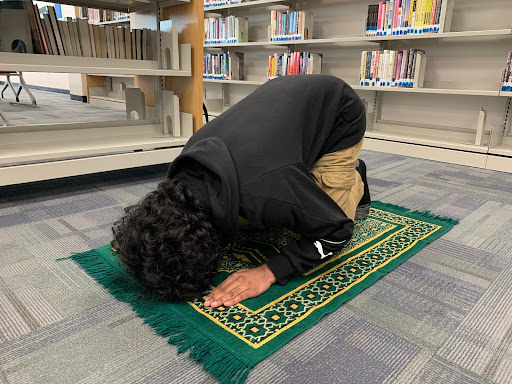Sorensen’s story: one student’s battle with GBS

Photo courtesy of Courtesy of Natalie Sorensen
Junior Natalie Sorensen in the hospital.
While most students spend junior year worrying about grades, sports, and colleges, junior swimmer Natalie Sorensen was diagnosed with Guillain-Barre syndrome (GBS). The rare syndrome affects only 3,000-6,000 people in the USA every year according to the Centers for Disease Control and Prevention (CDC), and can result in muscle weakness, pain, and eventually paralysis.
Last fall, Sorenson’s immune system was tested.
She fell ill four times, as well as having a bad reaction to a flu shot. Later tests revealed she also had COVID-19 at some point during this period. These illnesses likely resulted in the overactive immune system that can cause GBS. Her immune system had been so damaged that it could no longer tell the difference between bodily invaders and Sorensen’s own nervous system.
Like most GBS patients, Sorensen’s syndrome began with a tingling sensation.
“I was at swim practice one day, and my legs felt numb. It was like I couldn’t move them. I told my coaches they were tingly,” said Sorenson.
The next day she came down with what she thought was a simple, albeit severe, stomach virus. She checked into the ER to receive care as well as replacement fluids.
“I went home the next day and my legs were numb. I could barely walk and my legs felt really heavy,” said Sorensen.
The day after, Sorensen skipped school, still sick. The next day, she couldn’t even stand without throwing up. She checked into Inova Fairfax Hospital for fluids and care.
Doctors at first were unable to diagnose the rare syndrome.
“[Before I was diagnosed] I was like, ‘Am I going to die?’” said Sorensen.
Sorensen’s first week in the hospital was characterized by arms and legs that felt heavy, almost numb. Her face began to droop as her immune system continued its assault on her nervous system.
“I couldn’t swallow, I couldn’t move, I couldn’t close my mouth or shut my eyes,” said Sorensen.
As these motor function-based symptoms progressed, doctors began to realize it was likely a nerve-based problem, and not just fatigue as first thought. After a week, a second neurologist was quickly able to diagnose the syndrome with an MRI and a spinal tap.
“[When I was diagnosed], I was relieved to finally have an answer, because there were so many things that could have been wrong because they really couldn’t pinpoint it,” said Sorensen.
As the syndrome progressed, Sorensen lost basic function. She couldn’t even go to the bathroom by herself anymore. Her legs were completely immobilized, and if anyone tried to move them for her, she would scream in excruciating pain.
“All of my friends were worried and were like, ‘Why aren’t you texting us?’ My mom had to tell them it was because I couldn’t move my fingers. I had pins and needles in my hands,” said Sorensen.
Now that doctors knew what was wrong, a new fear presented itself. GBS patients’ lungs can often shut down as the nervous system loses control. Sorensen was moved to the ICU due to this concern. Luckily, she never had to be put on a ventilator, which her doctors owed to the fact that her lungs were strong due to swimming. To make matters worse, Sorensen developed a blood clot that later had to be removed during spring break to prevent health risks.
After the worst of the syndrome passed, Sorensen was able to begin the long road to recovery. She stayed at MedStar National Rehabilitation Hospital from early December to the end of January. During her stay, she attended physical and occupational therapy almost every day, working to recover her lost bodily functions.
“The therapists I worked with were great because they involved a lot of games during therapy,” said Sorensen.
Things were beginning to finally look better for Sorensen after a long few months of illness.
“Since it was over the holidays, a lot of my friends were able to visit. Two of my best friends who visited me a lot were Sarah Strickland and Hayden Wilkerson. Them and my family kept me going for a while,” said Sorensen. “Honestly, I think what helped me the most was [having] this motivation to get out of [the hospital].”
Sorensen’s recovery was faster than doctors predicted it to be. She was able to use a walker to move around and able to climb stairs, which was significantly ahead of her recovery schedule.
“My neurologist said I got lucky and recovered pretty fast compared to some people,” said Sorensen.
Recovery from such a devastating condition isn’t all positive. Sorensen still can’t walk that far without getting nerve pain in her feet and lower body. Her coordination and swimming ability still haven’t fully recovered and possibly never will. Sometimes she even notices the right side of her face slightly drooping from the residual nerve damage.
“Sometimes I’ll play a game with a ball and I can’t catch it because my reflexes are not as fast as they used to be,” said Sorensen.
Despite being back to “normal” life, she’ll never forget her experience and the effects it had on her as a person.
“I think I have a new mindset. Before, I was a really rigid and anxious person, now I just take everything with a grain of salt. I just live life day by day,” said Sorensen. “It’s been a humbling and motivating experience, [and] it’s just made me mentally stronger in general.”
Sorensen wants everyone to remember to not take anything for granted, especially health. If students have an opportunity to excel and compete in a sport or just in life, she wants people to take advantage when they get the chance, because life only offers so many opportunities.







![“Smiles for Myles [is the idea that] happiness can be a long term thing for Myles,” said Buddies Club sponsor and disabilities teacher Madison McKenna.](https://theoracleonline.org/wp-content/uploads/2024/02/MylesArticleKeyPhoto-452x600.jpg)



